Despite over four thousand ways to deal it, the perfect hand in cribbage is scarcer than a Sahara stoplight. This rarity doesn’t arise from the thousands of ways it can happen, of course, but, instead, from the near billion it can’t. With just one perfect hand in 216,580 deals, a cribbage player’s cards are over twenty times less likely to attain their summit than a muskie angler’s cast, and a muskie angler’s cast is the errand of a fool. These are serpentine pursuits. Only a flawless succession of left and right turns gets you to the cheese. In the past, we’ve kept our wit by balancing the mazes with open meadows. But now, in an era when Oreos advertise two dozen flavors, the geniuses among us have devised ways to turn placid fields of gold into impenetrable labyrinths, once the exclusive province of intrinsically improbable pursuits like perfect cribbage hands and four-foot muskies.
When I was in college in the early eighties, the only decisions students made about their coffee was how much cream and sugar—if any—to pour into the imperishable foam cup. Buyer’s remorse was as unlikely as forgetting to rewind your VHS tape, seeing something other than a music video on MTV, or knowing the correct lyrics for the chorus in Manfred Mann’s “Blinded by the Light.” But today, students line up like cattle, staring down verbose menu boards demanding a choice between steamers, lattes, americanos, cappuccinos, macchiatos, mochas, espressos, and happuccinos. “Damn it, I knew I should have gotten the Iced Brown Sugar Oat Milk Shaken Espresso instead of this Pumpkin Spice crap,” is something no one said when Michael Jackson ruled the radio, and every coed wanted to look like Farrah Fawcett.
This crisis of abundance can arise at any time or place. Just last month, my wife, Roxanne, lined an army of 3x2 cards along the wall so we could pick the one with the right shade of white. Honied White, Biscuit, Polar Bear, Navajo White, Rivers Edge, Muslin, Divine White, Casa Blanca, Oyster White, Restful White, Snowbound, Roman Column, Paperwhite, and, well, you get the idea. I picked Rivers Edge, but Sherwin-Williams’ deck of flashcards made every shade of white—even the best—more likely to be seen as wrong by at least one of the judges.
Thankfully, we kept the natural stain on the oak trim. For if we had chosen to paint it a complementary color, fifty shades of white would have mushroomed into an agglomeration of twenty-five hundred duotones—provoking a conflict appearing on a divorce lawyer’s Christmas list somewhere between forgotten anniversaries and text messages with old girlfriends.
Seeking respite from the Byzantine province of home improvement, I snuck away to my fishing office to unwind through the simple task of tying a fly. One, two, or even a half-dozen sparkle duns would do the trick. The sparkle dun is a deceptively simple fly with a dubbed body, Zelon shuck, and deer-hair wing attached in what some call the comparadun style. Like taking a seat in the dentist’s chair, the first step was easy. I picked a hook from a six-compartment box of Daiichi 1180s in sizes 12, 14, 16, 18, 20, and 22. Even for a guy prone to overthinking, the six-element decision space registered only one and a half on my stress meter.
Next, I had to select a body color from my Wapsi Super Fine dispenser, which offered BWO, Golden Olive, Fluorescent Chartreuse, Sulphur Orange, Pale Yellow, Pale Morning Dun, Rusty Dun, Dark Tan, Brown Olive, Gray Olive, Cinnamon Caddis, and, of course, Tan. Coupled with six possible hook sizes for every color, the number of possibilities swelled to seventy-two. Even Gillette’s clinical strength stick struggles to promote dryness when your stress meter reads four or five. I started to sweat.
For the trailing shuck, I drew some crinkled Zelon fibers from one of the six colors in my drawer: Medium Dun, Caddis Amber, Caddis Tan, Olive, White, and Mayfly Brown. Accounting for that, the combinations of hook size, body color, and shuck color ballooned to four hundred thirty-two, and my stress meter had little headroom between the needle and its maximum value of eleven. Selecting a patch of deer hair in bleached, natural, olive, or rusty brown elevated the decision space toward two thousand possible flies. And when I wrapped it up by choosing thread in either black, brown, gray, or wine, I created a world with nearly seven thousand sparkle duns I’d chosen not to tie. How could I possibly be tying the right fly? Surely, one of my rejects would have been better.
As the old story goes, a single monkey at a single typewriter will produce gibberish. But if we corral enough monkeys and give them enough time, one of them will—as the mathematicians say—almost surely strike gold. It’s an unpractical truth we angling lay folks used to mock. Used to, that is, until some marketing guru planted the seed that we weren’t catching fish because we didn’t have the right rod, reel, line, leader, tippet, or fly.
So, we asked for more choices, and the American Fly Fishing Trade Association answered. A prominent builder now releases their latest, most fantastic fly rod model, and we get to decide which of thirty combinations of weight, length, and action is best. We’re not going to buy just one, though, are we? And our line. Will it be smooth or textured? Weight forward or double taper? Designed for dry flies? Indicators? Streamers? Bass bugs? We have more options than a politician has promises. And best of all, we get to decide.
After arguing with his partner Émilie du Châtelet about paint colors for their château, the French philosopher Voltaire once wrote, Le mieux est le mortel ennemi du bien, which translates from French as The best is the mortal enemy of the good. He repeated this line in an overlooked treatise on fly fishing, Sur la futilité de la précision dans la sélection des mouches, in which he proclaimed that outside of hook size, trout care little about the choices we make when tying sparkle duns or any other non-descript fly. The only way to ensure our fly won’t catch a fish, the French sage warned, is not to tie it or buy it.
If—contrary to legend and lore—magpies aren’t obsessed with shiny objects, then maybe we fly anglers shouldn’t be either. My first fly rod was an eight-foot Cortland GRF1000 rod, built to cast a 5- or 6-weight line. Thirty years later, I still have it. And as much as I love sparkle duns, I’m going to drive to the hardware store and buy a half dozen Adams in whatever size they carry. Then, I’ll put them in an old plastic film container, take the Cortland rod and my first Plueger Medalist reel to a local small stream, and see if the trout are as picky about my fishing gear as the Sherwin-Williams folks think Roxanne and I are about white paint.
Maybe one day, I’ll return to the tying desk and pick the perfect colors and shades for every part of my fly. Or, perhaps, I’ll tie every possible combination. But, today, I’ll leave fifty shades of gray to its British spelling and follow Voltaire’s advice, just like Thoreau before me. Simplify, simplify, simplify!





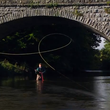




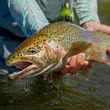
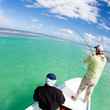


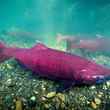





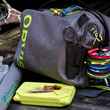



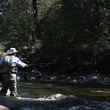
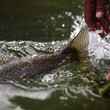



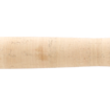
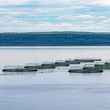
Comments